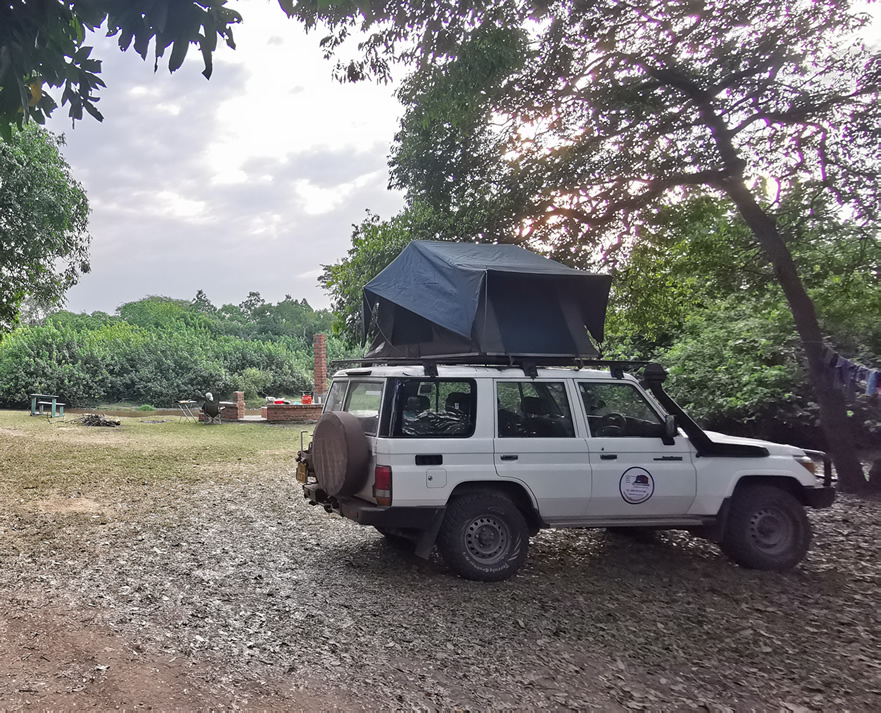When is the best time to visit Tanzania National Park ( Month by Month) – Self Drive in Tanzania
Tanzania is one of Africa’s most spectacular safari destinations, home to world-famous national parks divided into two main regions the Northern Circuit and the Southern Circuit.
Each offers unique landscapes, wildlife, and experiences throughout the year. The Northern Circuit, which includes the Serengeti, Ngorongoro Crater, Lake Manyara, and Tarangire, is known for the Great Migration, Big Five encounters, and classic Savannah scenery. The Southern Circuit, featuring Ruaha and Nyerere (Selous) National Parks, provides vast, wild, and less-crowded wilderness areas ideal for travelers seeking authenticity and solitude.
 The best time to visit these parks varies with Tanzania’s changing seasons. Wildlife movements, rainfall, and vegetation all influence what you can see and experience. This month-by-month guide explores the highlights of both circuits, helping you plan when to go for the best weather, wildlife sightings, and memorable safari moments.
The best time to visit these parks varies with Tanzania’s changing seasons. Wildlife movements, rainfall, and vegetation all influence what you can see and experience. This month-by-month guide explores the highlights of both circuits, helping you plan when to go for the best weather, wildlife sightings, and memorable safari moments.
January: In January, much of the Southern Serengeti is alive with wildlife. The short grass plains around Ndutu and Kusini are lush and green after the November–December rains. This makes it one of the best months for predator action, especially lion and cheetah sightings. Wildebeest herds are still in the south, calving in Ndutu, so this is an excellent time for close-up encounters with newborns and dramatic predator-prey interactions. Birdlife is vibrant, with migrant species in abundance.
Meanwhile, the Northern Serengeti is quieter, but still rich in wildlife. The Seronera area offers consistent game-viewing year-round, including big cats, elephants, and buffalo. The cool mornings and dry trails make January an enjoyable month for game drives. Ngorongoro Crater is green and picturesque, with plenty of grazing herbivores. Tarangire and Lake Manyara are lush and full of birds after the rains, offering a peaceful but rewarding safari experience away from crowds.
February: February is still an excellent time to explore the Southern Serengeti, as the short grass plains remain rich with grazing wildebeest, zebras, and predators. Calving season continues, making this month one of the most exciting for witnessing predator action up close. Cheetahs and lions are particularly active, and the wildebeest calving area is a major attraction for photographers. The atmosphere is lively with newborn animals and wildlife drama.
In the north, the Serengeti is less crowded, and wildlife disperses more evenly. The Seronera area continues to offer superb game drives, with many lion prides on display. Ngorongoro remains lush and offers excellent viewing of the crater’s resident species, including black rhino sightings. Tarangire is still verdant, attracting large elephant herds. Birdwatchers will delight in spotting migratory species in both Lake Manyara and Tarangire during this time.
 March: March is a shoulder season. The Southern Serengeti starts to dry up towards the end of the month, and wildebeest begin moving northwest in preparation for migration. This month still offers spectacular game viewing in Ndutu, with chances of spotting predators chasing newborn wildebeest. Birdlife remains abundant, and the scenery is a mixture of green plains and golden grasslands.
March: March is a shoulder season. The Southern Serengeti starts to dry up towards the end of the month, and wildebeest begin moving northwest in preparation for migration. This month still offers spectacular game viewing in Ndutu, with chances of spotting predators chasing newborn wildebeest. Birdlife remains abundant, and the scenery is a mixture of green plains and golden grasslands.
In the Northern Serengeti, the Serengeti plains begin to see more wildebeest arrivals, with scattered herds moving in from the south. The Seronera area remains a fantastic place for predators and resident wildlife. Ngorongoro Crater is still in great condition, with the crater floor offering excellent photographic opportunities. Tarangire sees drying watering holes, concentrating animals around permanent water sources, creating excellent game-viewing conditions.
April: April is the start of Tanzania’s long rainy season. The Southern Serengeti experiences heavy rains, making some roads inaccessible, and game viewing can be more challenging. However, this is an exceptional time for birdwatching, as migratory and resident birds are in abundance. Ndutu is lush and spectacular, with dramatic scenery and the possibility of intimate wildlife encounters despite the rains.
The Northern Serengeti receives rainfall, and wildlife disperses widely. Seronera still offers good game drives, but the best viewing may require more effort. Ngorongoro experiences verdant conditions, with waterfalls and green crater walls creating stunning landscapes. Tarangire’s scenery is at its greenest, with plentiful elephants and birdlife, making it a quieter but rewarding safari destination during this month.
May: By May, the rains ease and the Southern Serengeti begins to dry out. Wildebeest calves from the calving season are growing strong, and the predator activity remains high in Ndutu. This is a quieter month with fewer tourists, giving safari-goers an intimate experience of Tanzania’s wildlife wonders. The lush green plains provide excellent photographic opportunities.
The Northern Serengeti sees an increase in wildebeest numbers as they gradually move northwards. Seronera remains vibrant, offering excellent sightings of resident predators. Ngorongoro is still rich in greenery and wildlife. Tarangire is lush and beautiful, with elephants, large herds of wildebeest, and diverse birdlife still visible. This month offers a blend of good wildlife viewing and fewer crowds, making it a great time for a peaceful safari.
June: June marks the start of the dry season, one of the best times for wildlife viewing in Tanzania. The Southern Serengeti is quieter as the great migration moves further north, but Ndutu and Kusini still offer excellent predator viewing. The grass is shorter, making animals easier to spot. This is a great month for photographers who want clear skies and abundant wildlife.
 The Northern Serengeti comes alive in June, with massive herds moving into the region. The Mara River crossings begin towards the end of the month, creating breathtaking scenes of predator-prey interactions and dramatic wildebeest crossings. Seronera offers consistently good game drives. Ngorongoro is drier, concentrating wildlife around water sources. Tarangire remains excellent for elephants and predators. June offers some of the most dramatic safari experiences of the year.
The Northern Serengeti comes alive in June, with massive herds moving into the region. The Mara River crossings begin towards the end of the month, creating breathtaking scenes of predator-prey interactions and dramatic wildebeest crossings. Seronera offers consistently good game drives. Ngorongoro is drier, concentrating wildlife around water sources. Tarangire remains excellent for elephants and predators. June offers some of the most dramatic safari experiences of the year.
July: July is one of the best months for the Northern Serengeti. The migration is in full swing, with huge herds grazing in the Western Corridor and crossing the Mara River. Predator action is intense, and July is considered one of the peak months for witnessing the Great Migration. The Seronera area is less crowded, and game viewing is excellent.
The Southern Serengeti is quieter, with fewer wildebeest as most have moved north. Ndutu still offers good predator sightings, especially cheetah. Ngorongoro is dry and scenic, with wildlife concentrated in smaller areas for easier viewing. Tarangire is dry but spectacular, with large elephant herds and dry-season predators. Birdlife is less abundant but the open plains make up for it with dramatic wildlife encounters.
August: August is prime migration season in the Northern Serengeti. Wildebeest are concentrated in the Mara River region, with dramatic river crossings offering some of the most iconic safari moments. Predator activity is high, and sightings are frequent. Seronera also offers excellent viewing, though the highlight is the river crossings in the north.
The Southern Serengeti remains quieter but still offers good game drives for those looking for less crowded experiences. Ndutu offers scenic landscapes and resident wildlife viewing. Ngorongoro is excellent for crater safaris. Tarangire’s wildlife viewing remains superb, with dry-season conditions concentrating animals near permanent waterholes, ensuring excellent sightings throughout the park.
September: In September, the Northern Serengeti continues to offer spectacular migration viewing. Wildebeest and zebras are still abundant in the north, and river crossings remain a highlight for safari-goers. Predator sightings are exceptional, and the scenery is dramatic with golden light. Seronera remains an excellent base for game drives.
The Southern Serengeti starts to attract more wildebeest again as they move southwards, creating a quieter but still rewarding safari experience. Ndutu sees fewer visitors, allowing for peaceful wildlife encounters. Ngorongoro offers excellent viewing conditions. Tarangire’s dry-season scenery is dramatic, with large elephant herds and big cat action concentrated near water sources, making wildlife sightings exceptional.
October: October marks the start of the short rainy season, and the Northern Serengeti remains an excellent safari destination. Wildebeest herds are scattered, and predator sightings remain strong. The Seronera area is at its best for game viewing. The Mara River crossings slow down, but dramatic predator activity continues.
 The Southern Serengeti becomes greener as rains return, attracting wildebeest and other grazers back southwards. Ndutu offers beautiful scenery, birdwatching, and good predator sightings. Ngorongoro is lush and scenic, with great photographic opportunities. Tarangire begins to green up, attracting migrating wildebeest and zebra, and offering superb wildlife viewing in a quieter setting.
The Southern Serengeti becomes greener as rains return, attracting wildebeest and other grazers back southwards. Ndutu offers beautiful scenery, birdwatching, and good predator sightings. Ngorongoro is lush and scenic, with great photographic opportunities. Tarangire begins to green up, attracting migrating wildebeest and zebra, and offering superb wildlife viewing in a quieter setting.
November: November is a transitional month. The Southern Serengeti comes alive again as wildebeest move southwards, with calving starting towards the end of the month. This is one of the best months to visit Ndutu for dramatic predator-prey interactions and fresh calves. The scenery is lush after the short rains, creating a spectacular safari experience.
The Northern Serengeti is quieter but offers excellent game drives, particularly in the Seronera area. River crossings may still occur early in the month but taper off as herds move southwards. Ngorongoro is verdant, offering excellent wildlife viewing and photography. Tarangire is lush and green, with abundant elephants and birds, making it a rewarding month to visit despite fewer crowds.
December: December is a spectacular month for the Southern Serengeti. Calving season begins in earnest, and predator action is intense. Ndutu is the prime location for witnessing dramatic wildlife encounters and new life on the plains. Birdlife is vibrant after the rains, and the scenery is lush and green.
In the Northern Serengeti, the migration is quieter, but Seronera offers consistent game viewing with resident predators. Ngorongoro remains lush and scenic. Tarangire is beautiful after the short rains, with abundant elephants, zebras, and birdlife. December offers a quieter but rich safari experience, with the Southern Serengeti as the highlight for predator action and newborn wildebeest.
Conclusion: The best time to visit Tanzania’s Northern and Southern National Parks depends on your interests and the experiences you seek. The Northern Circuit shines from June to October with the Great Migration and exceptional game viewing, while the Southern Circuit is best from June to March, offering remote and uncrowded safaris.
Each season transforms the landscapes, wildlife, and atmosphere, making Tanzania a year-round destination. Whether you prefer dramatic migration scenes or peaceful wilderness, planning your visit around the seasons ensures a rewarding and unforgettable safari adventure in the heart of Africa.








